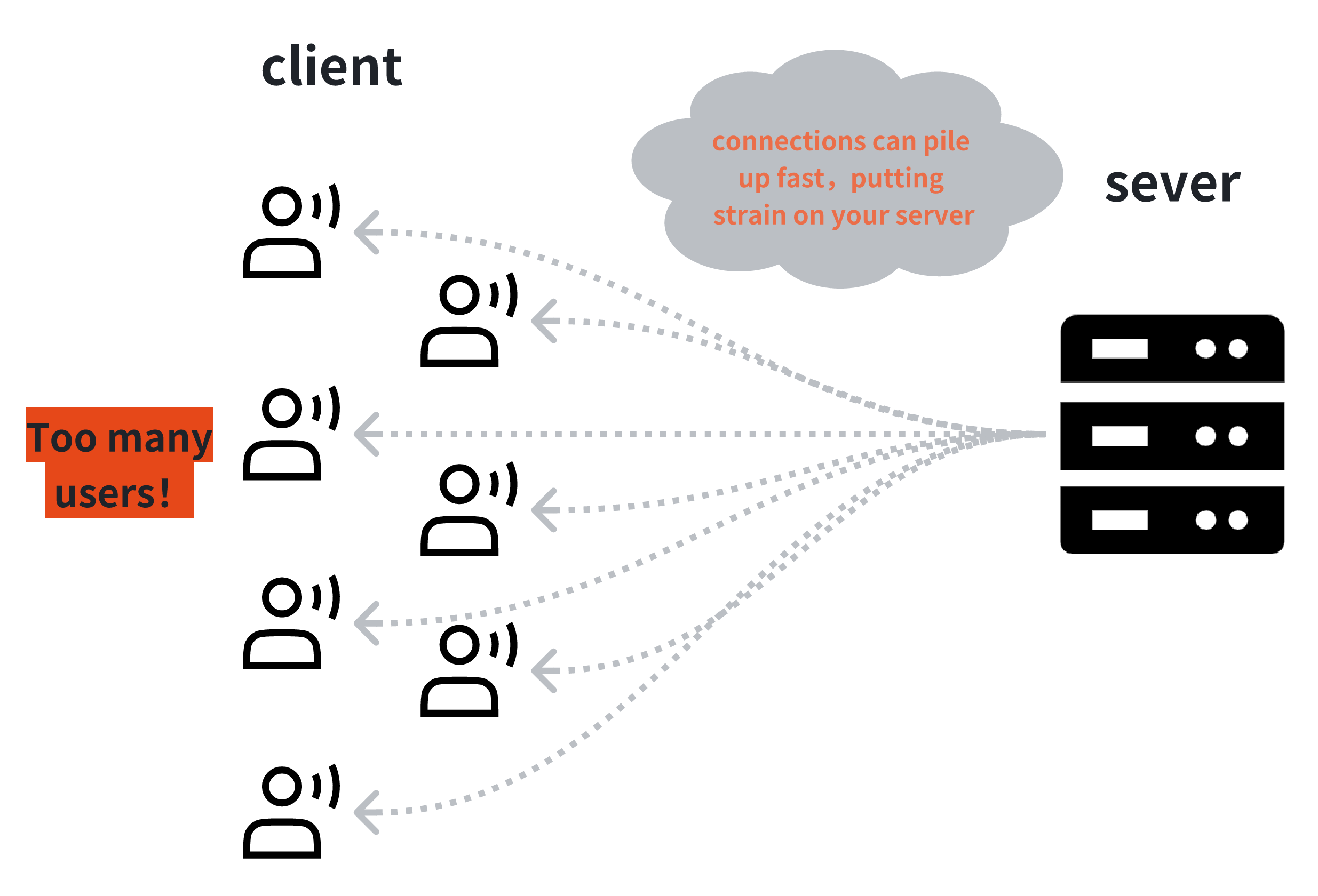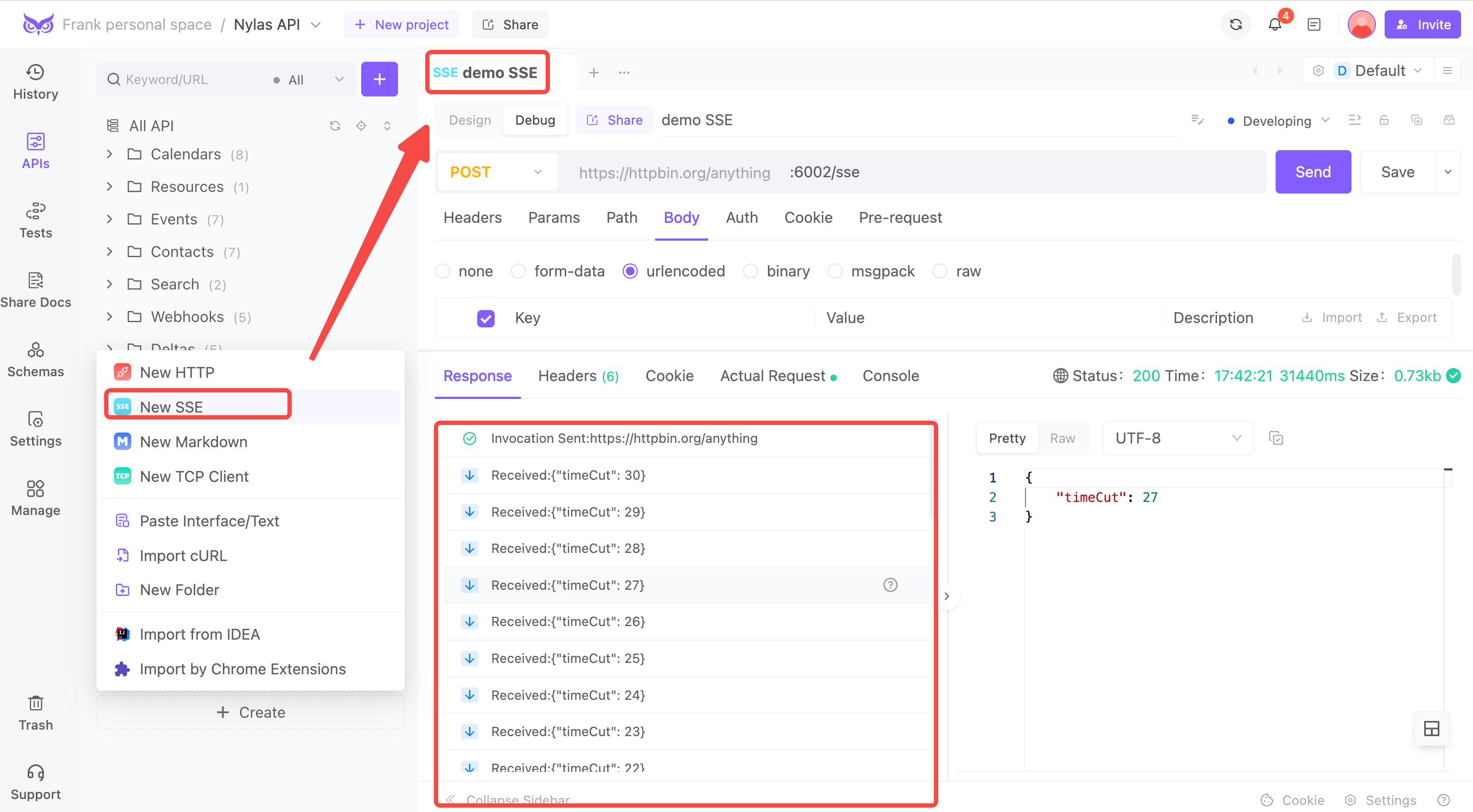The Hidden Risks of SSE(Server-Sent Events): What Developers Often Overlook
Like any tech, SSE has some hidden risks and challenges that can trip you up if you’re not aware of them. Let’s break down some of the things developers often overlook when working with SSE, and how you can avoid getting caught by surprise.

The Hidden Risks of SSE: What Developers Often Overlook
Server-Sent Events (SSE) is a handy tool for pushing real-time updates from the server to the client over a single, long-lasting HTTP connection. It's simple and efficient for many situations where you only need to send data one way. But,like any tech, SSE has some hidden risks and challenges that can trip you up if you're not aware of them. Let's break down some of the things developers often overlook when working with SSE,and how you can avoid getting caught by surprise.
1. Scalability: The Connection Conundrum

One of the biggest issues with SSE is scalability. Since SSE keeps a constant connection open for each user,your server needs to manage every single one of those connections. And here's the catch:most browsers have a limit on how many concurrent connections they'll allow per domain.If your app starts attracting a lot of users,those connections can pile up fast,putting strain on your server and possibly leading to slowdowns or even crashes.
To avoid running into this problem, you'll need to plan your server setup carefully.This might mean using load balancers or optimizing how you handle connections.Keep an eye on your server load and connection counts so you can spot any issues before they become a real problem.
2. Compatibility: Not All Browsers Play Nice

SSE works over standard HTTP,which is great for compatibility with a lot of existing web tech. But not every browser supports SSE, especially older versions like Internet Explorer. Plus,certain network environments,think corporate firewalls or strict proxies,might block the long-lasting connections that SSE relies on.
If you're dealing with a wide range of users,you might need a fallback option,like polling or a library that handles the connection logic for you.The goal is to make sure your app still works smoothly,even when SSE isn't an option.
3. Reconnection: It’s Not Always Smooth Sailing
One nice thing about SSE is its built-in automatic reconnection feature. If a connection drops, the client will try to reconnect on its own. But this can lead to some hiccups if you're not careful. For example:
Caution:
Depending on how your server is set up, a reconnect could result in duplicate messages being sent to the client, or the client might miss some updates while it was disconnected.
To handle this properly,you'll need to set up some server-side logic to track client connections and manage message delivery more reliably.Consider using message IDs or timestamps to make sure your clients get the right messages in the right order,without any repeats.
4. Security:Don't Let Your Guard Down
Security is a big deal with SSE because it uses a continuous HTTP connection.If you're not encrypting that connection with HTTPS,you're leaving the door open for attackers to intercept or tamper with your data.
Always use HTTPS to secure your SSE streams.And don’t forget to implement proper authentication and authorization to make sure only the right people are getting your data.
5. Data Formats: Text Only
SSE is designed for sending text-based data,which works fine for a lot of cases.But if your app needs to send binary data,SSE isn't the best fit. Sure,you can encode binary data into a text format like base64,but that adds extra bulk and processing time.
If you need to send binary data efficiently,you might want to consider WebSocket instead.It handles both text and binary data natively and can be a better fit for more complex data needs.
6.Limited SSE Debugging Tools on the Market
The market currently lacks adequate support for Server-Sent Events (SSE) in many popular tools,such as Postman,Insomnia,Bruno and ThunderClient.This limitation can lead to considerable frustration during the development process.Fortunately,I recently discovered EchoAPI,a tool that provides robust SSE debugging capabilities.This has effectively addressed a significant pain point in my workflow,enhancing both efficiency and productivity.If you're working with SSE,I highly recommend trying EchoAPI.It could transform your debugging experience and streamline your development efforts.www.echoapi.com.

Conclusion
SSE is a solid, easy-to-use tool for many real-time apps, especially when you just need to push updates from the server to the client. But it's important to be aware of the risks and challenges that come with it. By understanding these potential pitfalls and planning ahead, you can avoid common problems and build a more reliable, scalable, and secure application.
Whether you're working on a simple notification system or a more complex real-time platform,taking the time to think through these issues now can save you a lot of headaches down the road.Remember,the key to using any technology well is not just knowing its strengths,but also being aware of its limitations.




 EchoAPI for VS Code
EchoAPI for VS Code

 EchoAPI for IntelliJ IDEA
EchoAPI for IntelliJ IDEA

 EchoAPl-Interceptor
EchoAPl-Interceptor

 EchoAPl CLI
EchoAPl CLI
 EchoAPI Client
EchoAPI Client API Design
API Design
 API Debug
API Debug
 API Documentation
API Documentation
 Mock Server
Mock Server








